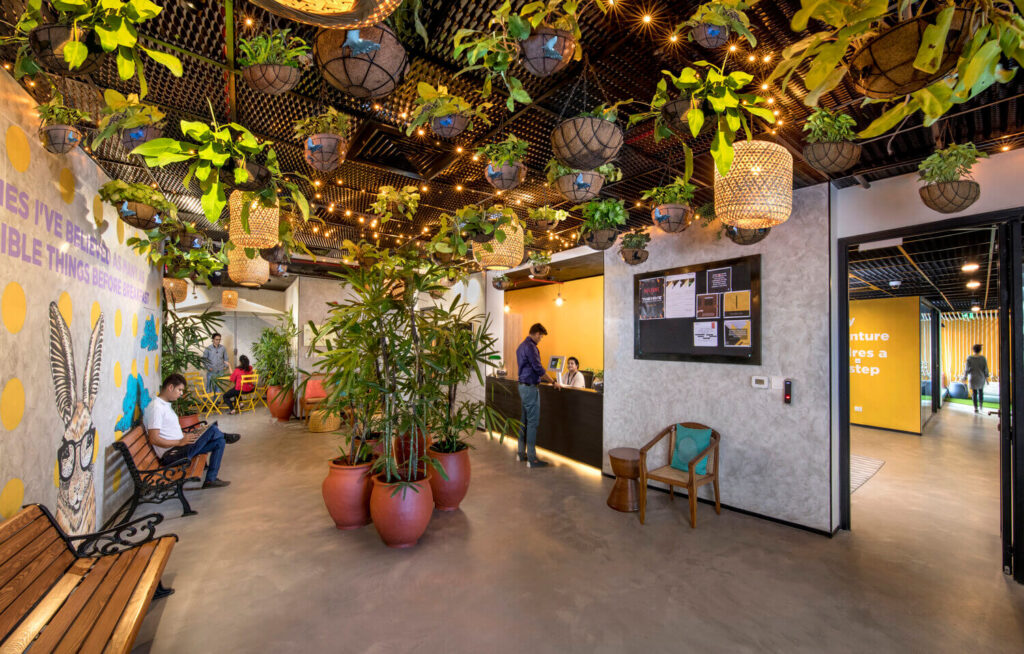
Do coworking spaces really encourage creativity and collaboration?
In recent times, there has been a significant surge in the popularity of coworking spaces, becoming the go-to choice for freelancers, startups, and even established companies looking for flexible work environments. Proponents of coworking spaces often tout their benefits in fostering creativity and collaboration among diverse groups of individuals. However, amidst the hype, it’s worth pausing to ask: Do coworking spaces truly live up to these expectations?
The surge of Coworking spaces
Before diving into the debate, let’s first understand what coworking spaces are and why they’ve gained such traction. Coworking spaces are creative shared workspaces where individuals from different organizations or professions work alongside each other in a communal setting. These spaces typically offer amenities like high-speed internet, meeting rooms, and a variety of work environments ranging from open-plan desks to private offices. The Hive is a vibrant coworking space designed to meet the diverse needs of modern professionals and businesses. With its dynamic solutions, The Hive goes beyond merely providing a workspace; it offers a comprehensive package aimed at enhancing productivity and convenience.
The appeal of coworking spaces lies in their flexibility, affordability, and the potential for networking and collaboration. For freelancers and small businesses, they provide an alternative to traditional office leases, allowing for greater mobility and cost savings. Moreover, the mix of individuals from diverse backgrounds can lead to serendipitous encounters, knowledge sharing, and collaborative opportunities.
Gives prime location with prestigious appeal
Coworking spaces strategically located in prime areas serve as bustling working hubs, providing enterprises with prestigious addresses. This positioning not only creates a favorable impression, particularly beneficial for startups but also fosters opportunities for networking and innovation. In these sought-after locations, established companies coexist, inviting collaboration and the exchange of ideas, ultimately driving growth and innovation. The Hive’s coworking space in Whitefield is situated in VR Bengaluru, a 900,000 sq. ft. community-focused lifestyle center offering easy access to retail, entertainment, hospitality, dining options, and event spaces. So, it eventually creates a sense of belongingness.
Harnessing creativity through collaboration
One of the key selling points of coworking spaces is their supposed ability to foster creativity and collaboration. The theory goes that by bringing together individuals with different skill sets, experiences, and perspectives, coworking spaces create fertile ground for innovation and synergy. The casual, communal atmosphere encourages interaction and idea exchange, leading to the cross-pollination of ideas and the emergence of novel solutions to complex problems.
Moreover, coworking spaces often host events, workshops, and networking sessions aimed at facilitating connections and sparking creativity. These activities provide opportunities for members to learn from each other, share insights, and forge valuable partnerships.
The reality check
While the concept of coworking spaces as hubs of creativity and collaboration is appealing, the reality is often more nuanced. Research on the effectiveness of coworking spaces in promoting these outcomes yields mixed results.
On the one hand, studies have shown that coworking spaces can indeed enhance creativity and collaboration by providing a supportive environment conducive to serendipitous interactions and knowledge sharing. A study published in the Harvard Business Review found that people who belong to coworking spaces report higher levels of thriving compared to those who work in traditional offices, attributing this to the sense of community and autonomy fostered in coworking environments.
On the other hand, critics argue that innovative coworking spaces may not be suitable for everyone and that the benefits they offer are contingent on various factors such as the culture of the space, the mix of members, and individual preferences and work styles. Introverted individuals, for example, may find the constant social stimulation of coworking spaces draining rather than energizing.
Discovering the perfect match
Ultimately, whether coworking spaces encourage creativity and collaboration depends on a multitude of factors, including the design of the space, the community culture, and the needs and preferences of individual members. While coworking spaces can provide valuable opportunities for networking and collaboration, they are not a one-size-fits-all solution.
For some, the hustle-bustle and the chance encounters with like-minded individuals may spark creativity and inspire collaboration. For others, a quieter, more solitary environment may be more conducive to deep work and innovation.
Conclusion
Coworking spaces have undoubtedly reshaped the way we work, offering a flexible alternative to traditional office setups and fostering a sense of community among remote workers and independent professionals. While they hold promise as hubs of creativity and collaboration, their effectiveness in delivering on these promises varies depending on a multitude of factors.
Ultimately, whether coworking spaces encourage creativity and collaboration boils down to the individual experience and the unique dynamics of each space. As with any work environment, finding the right fit is key to unlocking the full potential of coworking spaces as engines of innovation and collaboration.